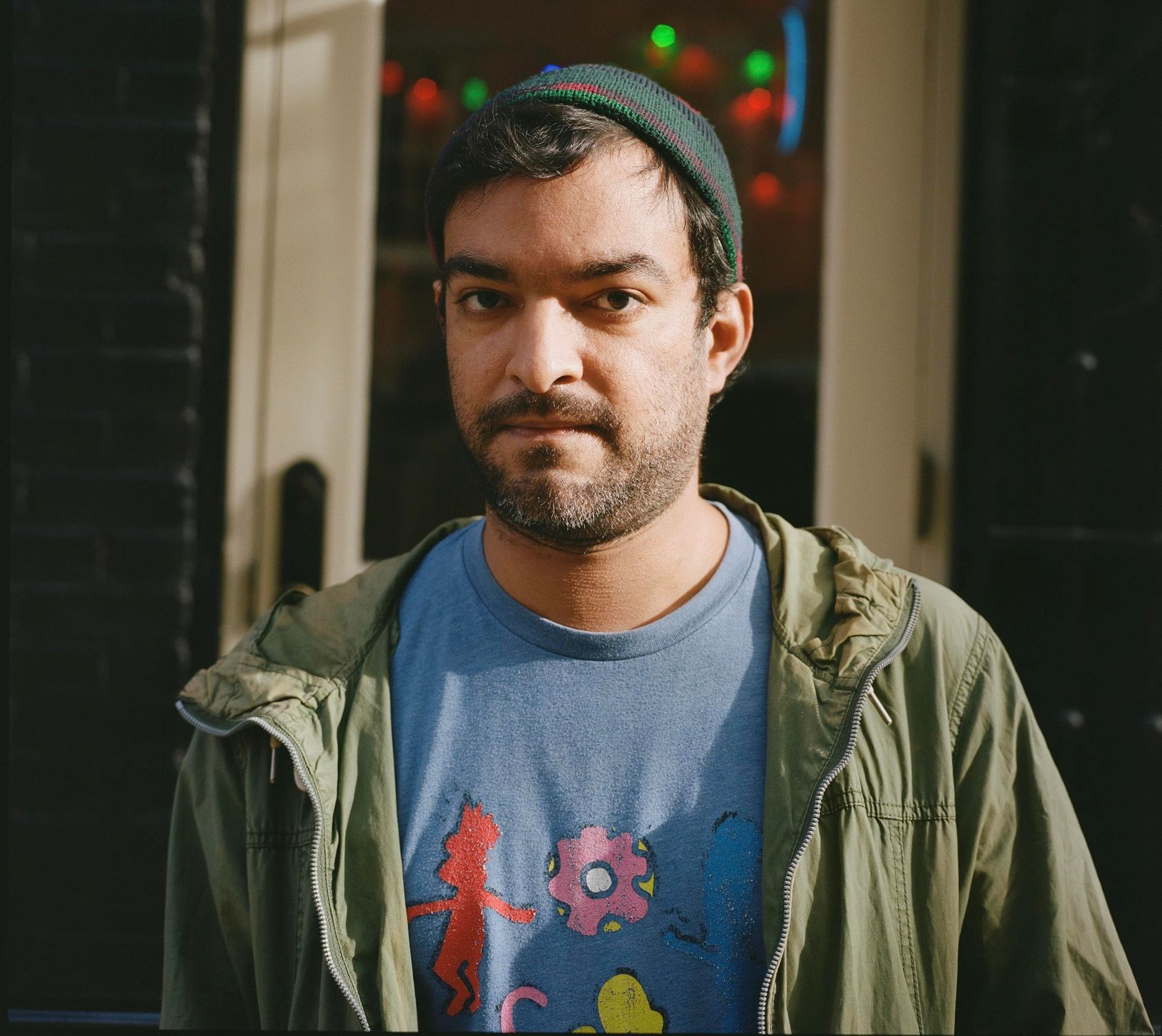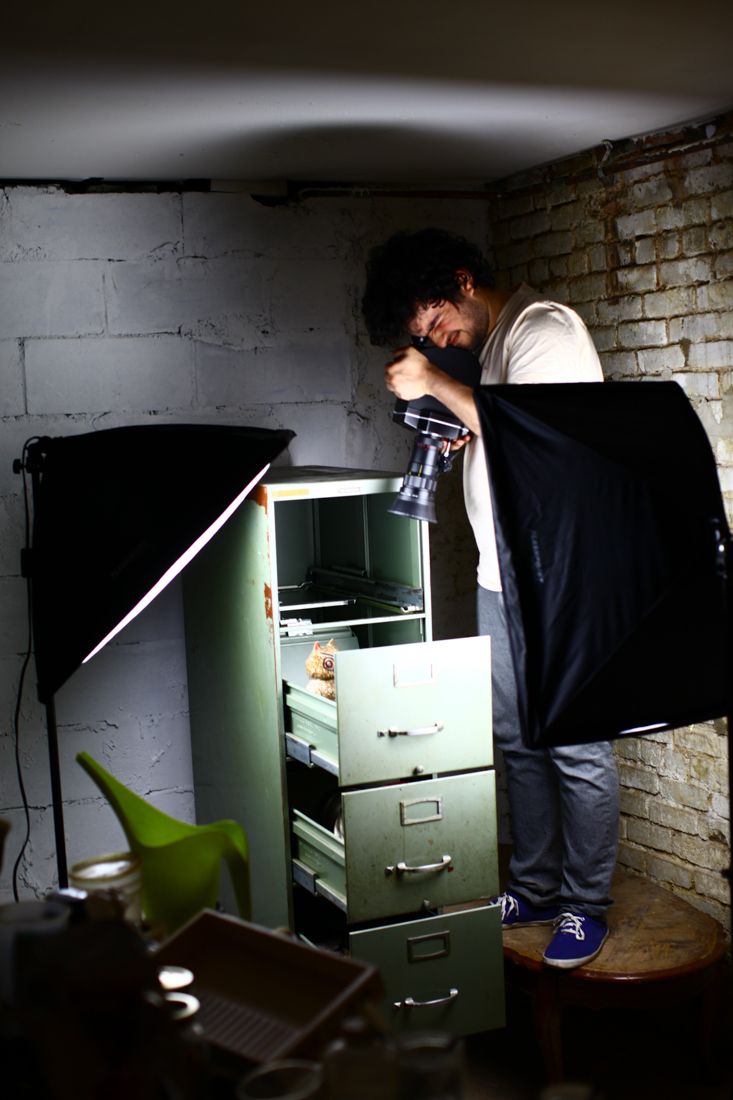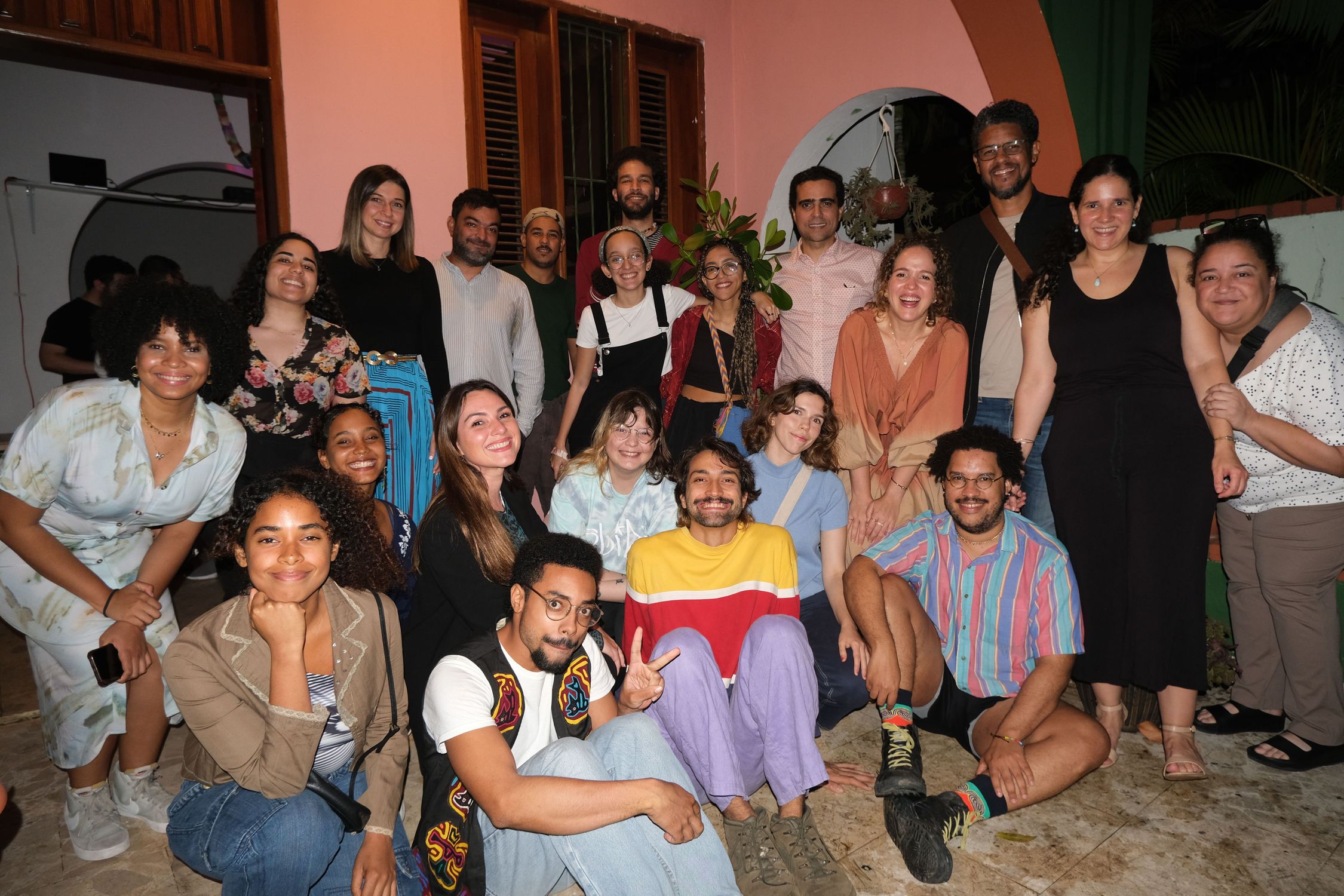Interview:
Locarno-selected alumni Tomás Pichardo Espaillat
In 2023, Tomás Pichardo Espaillat was selected for both Berlinale Talents and one of our Talents International initiatives, Talents Guadalajara. This year, his film "Olivia & Las Nubes" has been selected for the prestigious Locarno Film Festival, competing in the Concorso Cineasti del Presente section, "the space for the filmmakers of the present and the cinema of tomorrow".
It is a big moment for the filmmaker from the Dominican Republic. The animation is his debut feature, and has been in the making for almost ten years. We caught up with Tomás to hear all about the film, his process, inspiration, challenges and more.


Congratulations on your selection at Locarno. Can you tell us a little bit about “Olivia & Las Nubes”, thematically?
Olivia & Las Nubes is a story about a relationship. It's told from different points of view and with a magical realism lens. I like calling it, ”A plant that falls in love with a suitcase”, but in reality the same moments are portrayed in different ways. From his point of view, she’s a plant that is slowly growing and becoming a woman. He’s afraid that she’ll grow legs and leave him. From her point of view, he’s just a memory inside her suitcase, under her bed.
Thematically, this film explores relationships, in the sense of how we communicate or don't communicate with each other and how we can interpret the same memories in different ways. Ingmar Bergman’s “Scenes From a Marriage” mentions something that resonated with me while I was writing this film: The concept of "emotional illiteracy," or how we sometimes grow up not knowing how to relate with each other.
This is your first feature. How did you find the transition from shorts?
I wrote “Olivia & Las Nubes” between 2013-2015. That was almost 10 years ago. It also took me a while to get funding and start the production of this film. I had many false starts, but I was finally able to start pre-production and production of the film in 2019. I feel those years in between were very helpful for me to understand how to make this film.
I was very active, doing commission and freelance animation shorts. I also had a very clear idea in my head of how I wanted the film to look, so as I worked on all these shorts I was always thinking about what I needed to learn or to practice in order for me to make “Olivia & Las Nubes.” I knew some scenes in the film would be hand-drawn, so I practiced hand-drawn animation with these shorts, the same for cut-out, stop-motion, and multiple other techniques. That's why I think the transition went so smoothly in my case, because I was already using this time to work on the dozens of shorts that prepared me to make the film.

It is an incredibly unique film stylistically, using traditional animation alongside and overlapping with a number of other forms. How would you describe your unique animation style?
I realised I was an animator long after I had become an animator. When I was young, around 13, all I wanted to do was make live-action films, to make fiction. But during this time there were no film or animation schools in the Dominican Republic. I didn’t have enough money to buy a camera, and I was very shy, so it always took me a while to connect with people. I began doing short films or attempts at short-films with whatever I could find at home. These films were really animations, but at the time I thought of them as sketches for ideas that I would later make into fiction films.
After high school I went on to art school, in my country we have a very good school for visual arts called Chavón. There I developed a very strong visual identity. I continued making these films but now I was adding a mix of different art techniques. I was also filming, but when sequences were too expensive or too difficult to shoot I animated them instead. I was trying to find cohesive ways for this mixture of techniques to work together. By the time I started to write "Olivia & Las Nubes," all these mix media shorts had combined with my desire to become a filmmaker. Without realising it, I had become an animator. I feel this is how that style came to be. From replacing what I couldn’t film, with whatever else I could find to express that very same feeling. Then in later projects just embracing that way of working.
In the formation of your style, who/what were some of your biggest influences?
Early on, "Bettlejuice", was a huge influence in my work. I was young, too young to understand how filmmaking works. For me cartoons and films just existed on TV, and they sort of came out of thin air. But it was with this film that I realized movies were made by people, that it was something that could be created. And I was hooked, I wanted to become a filmmaker so I could do that.
Later on, Flash animation became very important in my formation. There was a time during the early 2000s where you could be an animator and do animations with next to no resources, you just needed to know how to use Flash. There was a whole wave of very rough Flash animations during that time, it almost became a style, like a type of Limited Animation. I adopted that style for a while as a way to try to tell my stories.
While in art school, I fell in love with German expressionism, not only in film, but also in art and illustration. It became a big influence in my work. As well as other German artists like Oskar Fischinger and Oskar Schlemmer’s Triadic Ballet.
Aside from visual references, the places I have lived have had a huge impact in my style and work. Santo Domingo as a city is very chaotic, and very noisy, with a mismatch of colours and shapes. During my time there, my animations felt the same way. As I travelled and lived in other countries, I noticed significant changes in my animations.
Stories also have a direct influence in my visual style. I love magical realism, Haruki Murakami is my favourite writer, and every time I read one of his novels my head gets full of crazy ideas for new projects.
What is one of your favourite aspects of working in animation?
I really enjoy every aspect of the animation process. I’ve been working by myself for a long time, and have been involved in all the different stages of making an animated project. Yet by far my favourite aspect of working in animation is the storytelling. For me the script is one of the most vital parts of a film. I love writing for animation. In animation I can create a world, I can make stories that happen in Jupiter, but also entirely inside the mind of a character. I can incorporate compositions and framing from the visual arts. I can also play with how I'm visually portraying the subtext. When I write, I’m not thinking about where the story is going or what the film is about; it just flows in a very intuitive way. It feels like the story becomes alive as I write it. Maybe I have some ideas of where I want the story to go next, but the characters usually take them in another direction. I love it when that happens, and I enjoy discovering what the story is trying to tell me. I feel like a member of the audience, discovering the movie as it comes to be.

What do you find to be one of the biggest hurdles to overcome in animation?
In the Dominican Republic, producing animation is very new. Often it's not taken as seriously as fiction is. It’s usually thought of by the general public as being only for children. We don’t have a strong affinity for animation in our culture or history. Most Dominicans consume a very specific style of animation. For me this is a hurdle in my work. It was a huge part of why it took so long to produce this film. The project, in terms of visuals, needed time to be understood.
How is the situation of the film industry in the Dominican Republic? Are there any changes you would like to see in the future?
During the ten years I’ve been working on this film I’ve noticed how much the Dominican film industry has changed. In 2013, the animation community was almost non-existent; it wasn’t considered as serious or important as fiction was during that time. Now things are very different, thanks to the current film commission at DGCINE. I constantly feel their support, and they have been a great help not only for our film, but also for the entire animation community. There’s a constant attempt to make it grow, to create new programmes and opportunities.
I feel it will keep growing and getting better. I see it as a collaboration between these different parts. There's the film commission making an active effort to improve on their side, and then the new wave of animators making films. The animators gain valuable experience from working on these projects, and the community as a whole receives access to these platforms and opportunities abroad.

Can you tell us a bit about your experience at Berlinale Talents?
I took part in both Berlinale Talents and Talents Guadalajara in the same year. At the time I was in mid-production for “Olivia & Las Nubes." I felt that having that global perspective in the middle of making the film changed, quite drastically, the way I approached its final stages. It inspired me tremendously, and I met a lot of people that went on to become great friends. Maybe at some point in life we'll even become collaborators. The talks, the mentors, and the workshops gave me great insights into my work. In my earlier shorts, I never worked with actors, or knew anything about casting. Yet during the workshops I managed to learn a lot about that part of the process. I was also humbled by all the really inspiring films I saw and the impressive people I met at the industry dinners.
Tomás Pichardo Espaillat (b. 1987) is a storyteller from the Dominican Republic. Working primarily on animation and film. He was granted a full year scholarship at Fabrica, Benetton's Design Research Center, in Treviso, Italy in 2013, where he worked on film & video. Tomás received his BFA in Animation at Parsons, The New School of Design in 2010. And his AA degree in Fine Arts, at Altos de Chavón, in 2008.
An alumni of Berlinale Talents, Talents Guadalajara and Pictoplasma Academy, Pichardo's work has hints of magic realism. Evoking the colorful, surreal and sometimes disorienting experience of growing up in the Caribbean. His world is personal and intimate, with characters full of colors and textures, drawn into situations outside of their comfort zone. His animations have been screened at the Annecy Animation Film Festival (France), Quirino Awards (Tenerife), Raindance Film Festival (London), Ottawa International Animation Festival (Ottawa) and Pictoplasma Film Festival (Berlin), among others.
Find out more about Tomás’ work here.